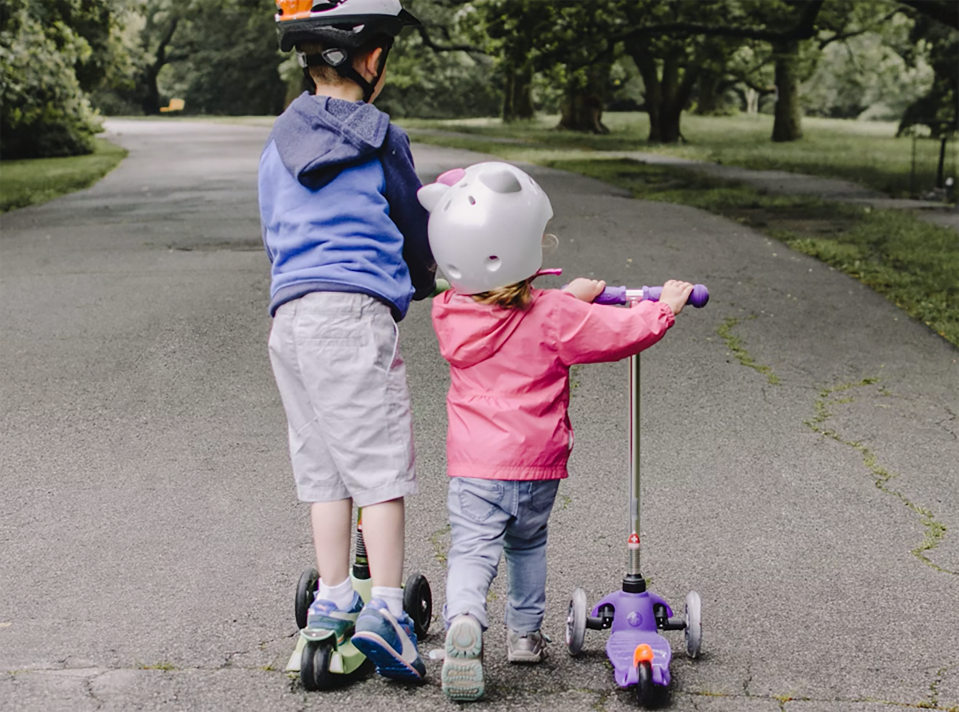Hoverboards vs. Electric Scooters for Kids Which is the Better Choice?
In recent years, personal electric vehicles have surged in popularity among children and teenagers. Among these, hoverboards and electric scooters stand out as two of the most sought-after options. Both provide a unique and thrilling way for kids to navigate their surroundings, but they come with distinct features, benefits, and drawbacks. When it comes to choosing between a hoverboard and an electric scooter for kids, parents must consider a variety of factors, including safety, ease of use, style, and price.
The Appeal of Hoverboards
Hoverboards, also known as self-balancing scooters, have captured the imagination of many children. With their sleek design and futuristic appeal, hoverboards can be a fun way for kids to express themselves while developing their balancing skills. Typically, hoverboards have two foot pads and are controlled by the rider's weight distribution. Leaning forward accelerates the board, while leaning back slows it down or reverses the motion. This unique method of control can enhance a child's sense of coordination and balance.
However, hoverboards are not without their concerns. Safety is a major issue, as falling off a hoverboard can result in injuries, especially for younger or less experienced riders. Many hoverboards have been criticized for stability issues, particularly on uneven surfaces. Additionally, safety gear such as helmets, knee pads, and elbow pads is highly recommended to mitigate the risk of injuries while riding.
The Benefits of Electric Scooters
On the other hand, electric scooters offer a more stable and beginner-friendly experience. With a platform for both feet and handlebars for steering, electric scooters are often easier for children to ride, especially for those who may be hesitant about balance. They typically have a maximum speed range that can be ideal for younger kids, making it easier for parents to ensure a safe riding experience.
Electric scooters also provide an option for longer rides, as many models come equipped with a more extended battery life compared to hoverboards. This durability means kids can enjoy longer adventures in their neighborhoods or parks without the need for constant recharging. Furthermore, electric scooters tend to have a straightforward design, which makes them easier to understand for young riders, thus encouraging independence and mobility.
Comparing Safety and Stability
lehuo hoverboard vs electric scooter for kids

When comparing hoverboards and electric scooters in terms of safety, electric scooters typically have an edge. The broader wheelbase and more stable design of a scooter reduce the likelihood of tipping over. Additionally, many electric scooters come with features like lights, reflectors, and even horns, which can enhance visibility and safety when riding in low-light conditions or on roads.
In contrast, hoverboards require a higher degree of balance and control, which might not be suitable for every child. While older kids might find the challenge exhilarating, younger children or those new to riding may struggle to maintain their balance, leading to falls and accidents. Parents need to carefully evaluate their child's maturity and skill level before deciding on hoverboards.
Cost and Maintenance
Cost is another critical factor that parents must consider. Generally speaking, both hoverboards and electric scooters fall within a similar price range, though it can vary significantly based on brand, features, and quality. As with any purchase, it’s essential to seek out reliable brands that prioritize safety and durability.
Maintenance is also relevant. While both types of vehicles can require some upkeep, electric scooters usually have fewer mechanical components that might need frequent attention, such as battery replacements. Hoverboards, particularly cheaper models, may require more regular monitoring for wheel wear and battery performance.
Conclusion Making the Right Choice
In conclusion, both hoverboards and electric scooters offer exciting opportunities for kids looking to explore their surroundings. The choice ultimately depends on various factors, including the child’s age, experience level, safety considerations, and personal preference. For younger or less experienced riders, electric scooters may be the safer and more manageable option. For older kids seeking a fun challenge, hoverboards could provide an exhilarating riding experience.
Regardless of the choice, it’s crucial for parents to supervise their children and equip them with proper safety gear. Ultimately, encouraging outdoor play and activity is what matters most, whether kids are zooming by on a hoverboard or gliding along on an electric scooter.
-

 Scoot&RideKids Child Kick Push Scooter 3 Wheels with LED Flashing Tilt Lean Boys Girls Scooter
Scoot&RideKids Child Kick Push Scooter 3 Wheels with LED Flashing Tilt Lean Boys Girls Scooter




- 4
$33.17 -

 Scoot&RideKids Scooter Child Kick Flashing LED Light Up 3 Wheel Push Adjustable Folding 3
Scoot&RideKids Scooter Child Kick Flashing LED Light Up 3 Wheel Push Adjustable Folding 3- 0
$25.52 -

 Scoot&RideKids Scooter Child Kick Flashing LED Light Up 3 Wheel Push Adjustable Folding 2
Scoot&RideKids Scooter Child Kick Flashing LED Light Up 3 Wheel Push Adjustable Folding 2- 0
$33.17 -

 Scoot&RideKids Scooter Teens Foldable Kick Push Scooter Adjustable Height Safe 2 Wheels
Scoot&RideKids Scooter Teens Foldable Kick Push Scooter Adjustable Height Safe 2 Wheels




- 4
$49.99
Meet our partners and discover what powers their creativity!
When you register for a Lohas scooter, you will receive a 10% discount on your first order and can be notified of sales, new product launches and other offers in advance.









